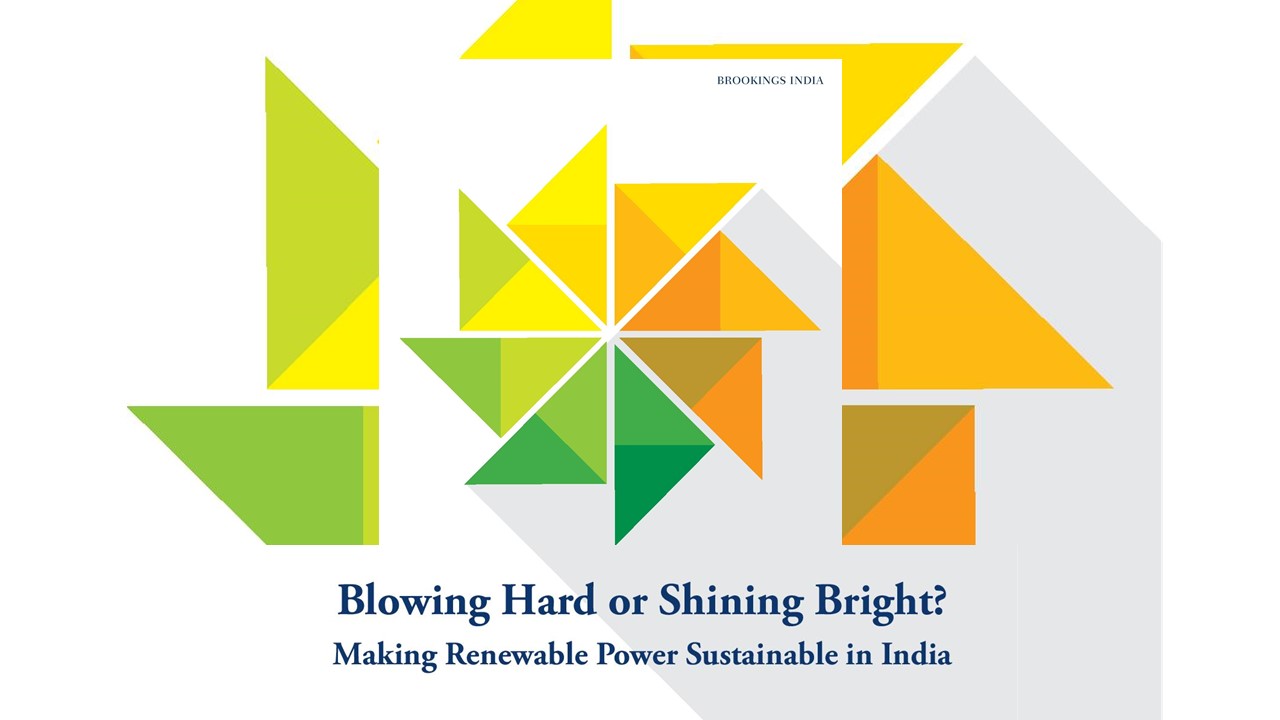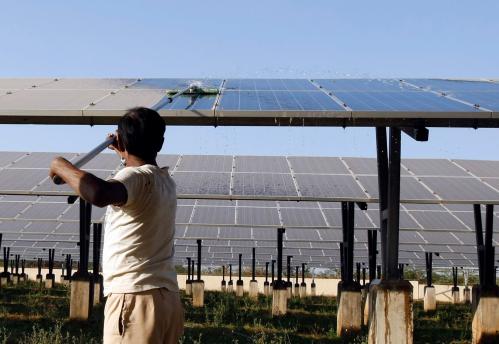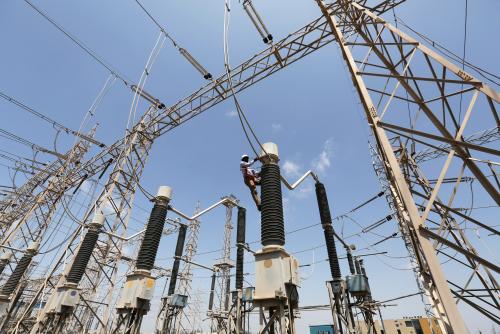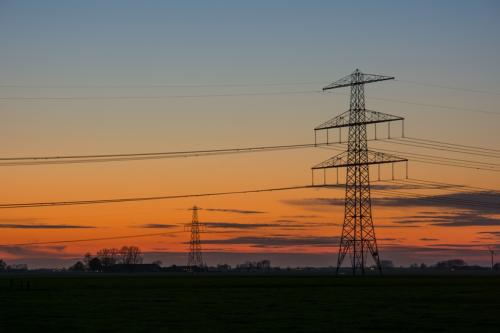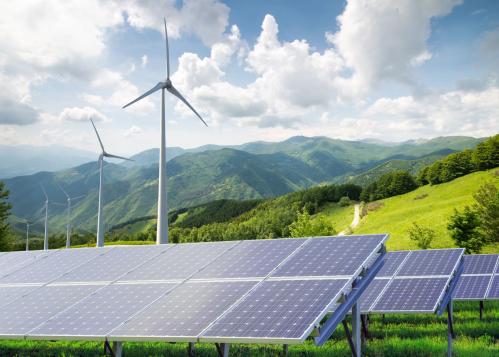Content from the Brookings Institution India Center is now archived. After seven years of an impactful partnership, as of September 11, 2020, Brookings India is now the Centre for Social and Economic Progress, an independent public policy institution based in India.
A nuanced look at Making Renewables in India Sustainable, spanning economics, environment, grid integration, regulation, role of States, consumers, employment, and innovation. Authors bring experience from Government, Industry, NGOs, and Academia.
Foreword
Renewable energy, more specifically, electricity from renewable sources of energy, has traditionally been viewed in a narrow lens of price and market share. While true that prices are falling and market shares are rising dramatically, a more detailed analysis of the scalability, viability, and growth of renewables must place renewable energy (RE) in the context of the broader electricity grid. The power sector in India already faces enormous challenges, most notably of limited access (electrification), shortfalls of power (manifested by load-shedding), and precarious finances of the power utilities, with annual losses measured in many tens of thousands of crores per year.
In this backdrop, the government has announced bold targets for RE, most notably solar power, aiming to grow to 100,000 MW by 2022, compared to today’s total utility grid of some 250,000MW. What will RE do to the power system, not just from the obvious economics perspective, but also from a grid management perspective? It’s well known that RE is variable – how will the Indian system manage?
More than just a question for utilities, RE is attractive for end-users as well, who can generate their own power (e.g., via roof-top solar photovoltaic, or PV, panels). But, if those who pay the most for power today are the first ones to leave the traditional grid, what will this do the to the rest of the system? Hence, transformation is the fundamental question that RE brings – what will RE do to supply-demand balances, and what will be the role of the traditional grid?
With an aim of increasing dialogue towards making renewables sustainable in India, and move the overall power system towards being green, clean, and smart, Brookings India is delighted to bring together experts in this space with academic, non-profit, government, and industry experience, to share short essays on different aspects of sustainable electricity in India, with focused recommendations spanning the short-term (easy) to longer-term (challenging). Our focus is limited to renewables-based electricity, and not all renewable energy (where biomass and solar thermal have great potential). Also, as per norms, only mini or micro-hydropower is considered in this framework of renewable energy; bigger hydro plants are considered conventional sources of energy. As with all publications from Brookings, the views presented are those of the authors, and there is no institutional viewpoint taken.
The Table of Contents shows the wide range of topics covered, from small to large scale RE, the environment, jobs, institutional and financial issues, to R&D. There are also chapters asking tough questions on grid integration and economics. A shortcut answer to the over-simplified question of how much RE can the grid handle is that the truth lies somewhere in between extremes. RE is neither a silver bullet to increased supply, nor is it a burden that will collapse the grid. The grid can handle more and more renewables, but at a cost. Even costs themselves are dependent on assumptions, and claims of “grid parity” today must be taken in context (one cannot compare retail prices with bulk procurement prices). Ultimately, we hope this volume provides reflective analysis combined with focused policy recommendations for this space.
The government has a commitment to renewable energy, and the private sector has also responded well. Ultimately, we want to accelerate the trajectory of renewables in the most sustainable manner possible, with sustainability defined not just as the environment but also economics and equity.
Book launch by Power Minister Piyush Goyal
______________________________________________________________________________
Table of Contents
(Click title to view individual chapter)
- Introduction Rahul Tongia
- Chapter Overviews and Volume Summary Rahul Tongia
- Renewable Energy Basics and Frameworks
- Renewables and the Grid Rahul Tongia
- Institutional and Financial Issues Anish De
- Renewables and Economics Rahul Tongia
- RE Scalability
- Making Grid Scale Renewables Work Sumant Sinha
- Making Small Scale Renewables Work Harish Hande, Surabhi Rajagopal, Vikshut Mundkur
- Future Transformations
- The Electricity Future and Synergy: Efficiency Ashish Khanna & Mudit Narain
- The Electricity Future and Synergy: Storage and Smart Rahul Tongia
- Beyond the Techno-Economics of RE
- Environment Issues and other Externalities Ramprasad Sengupta
- Renewables and Employment Sabina Dewan
- R&D and Innovation for Renewables Gopichand Kattragadda
- Renewables Policy and Broad Recommendations Kirit Parikh


